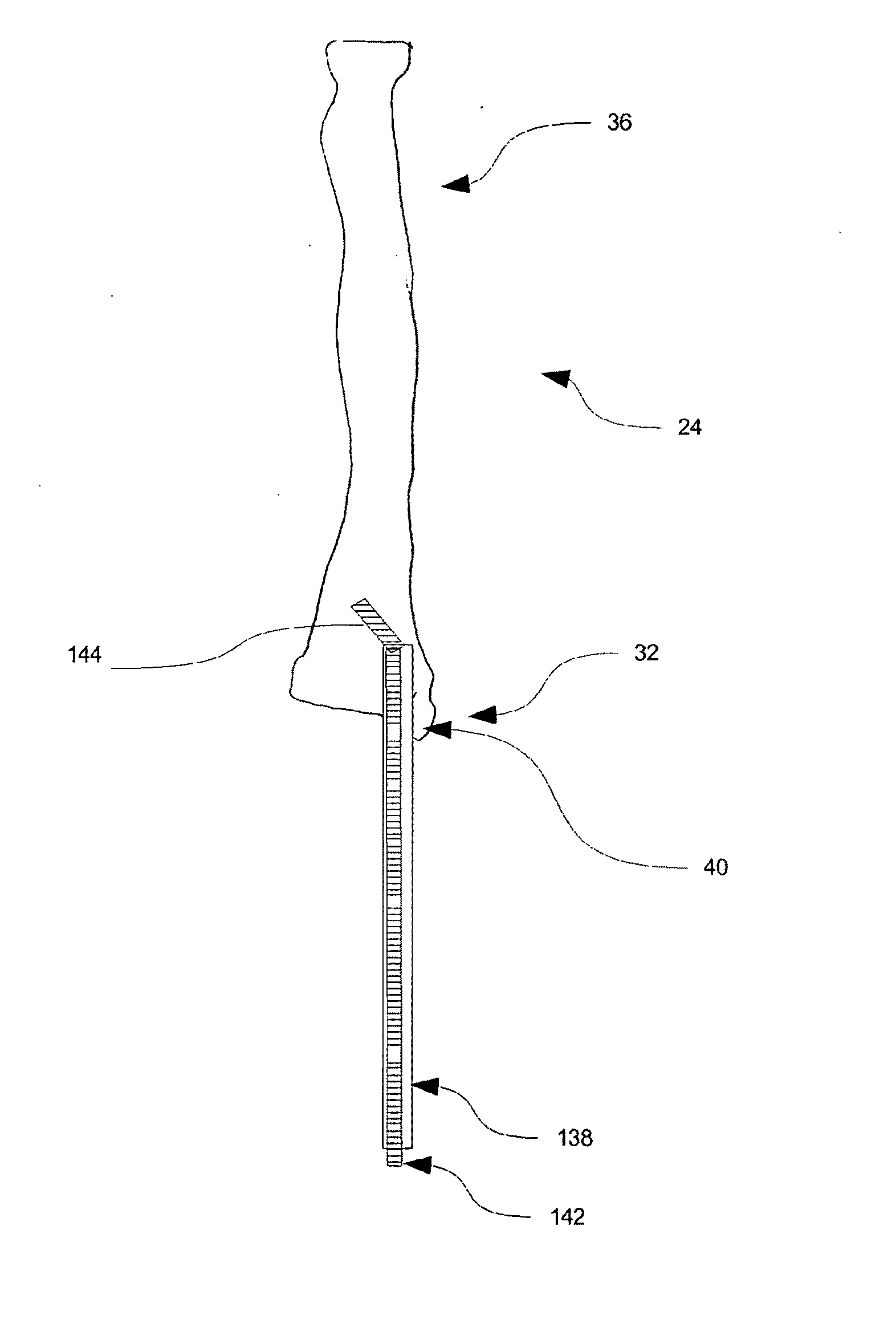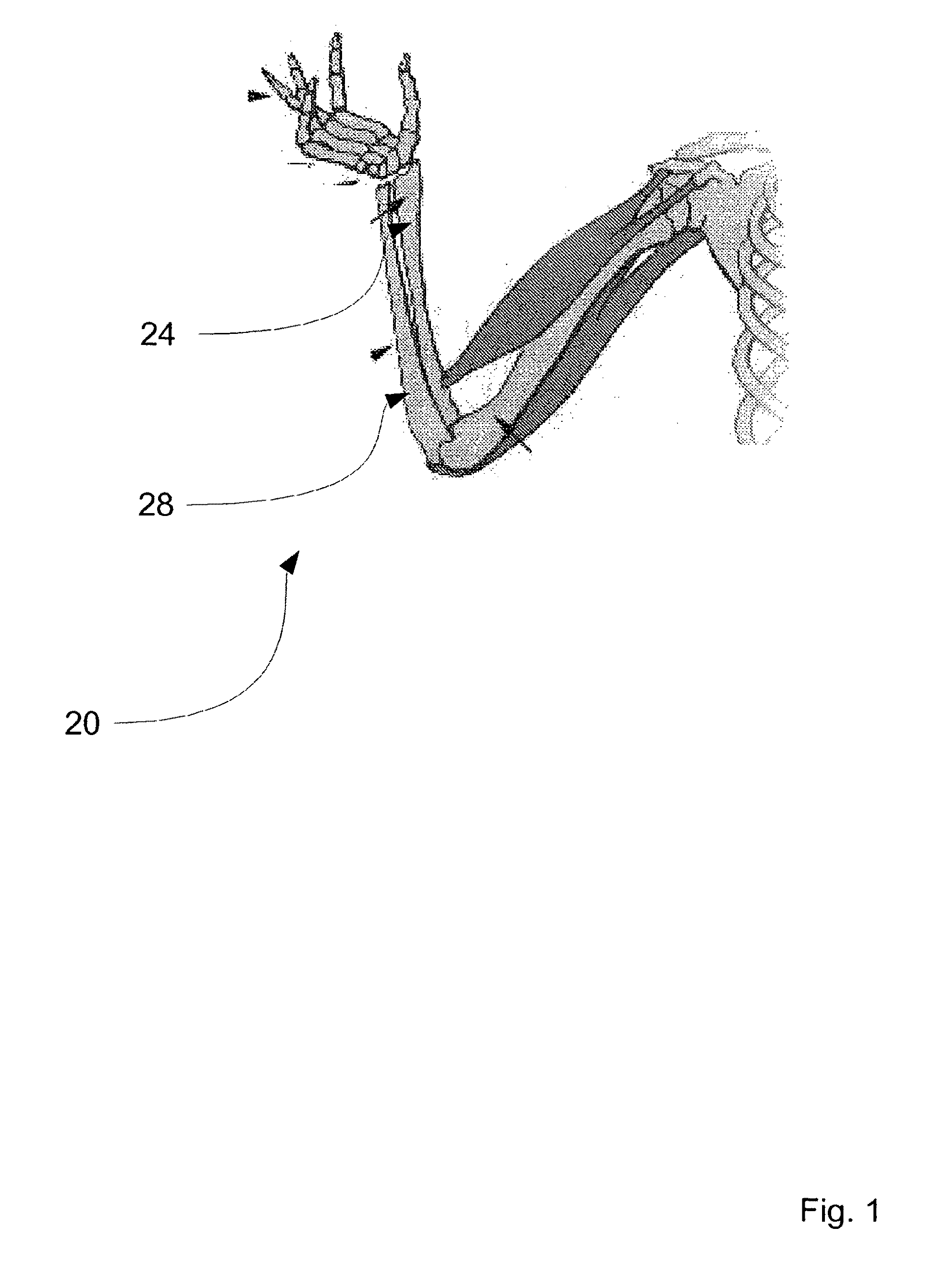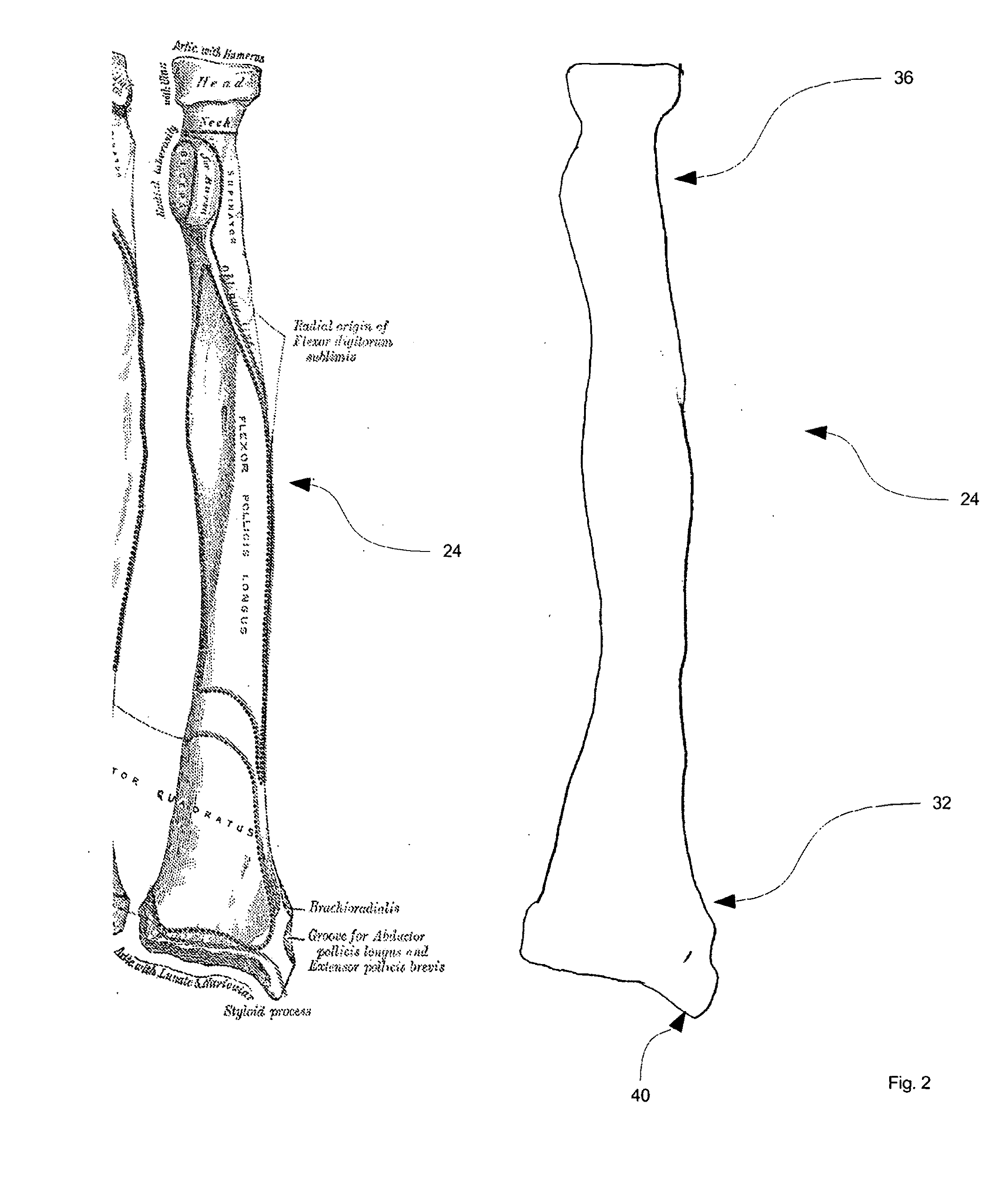Method and kit for intra osseous navigation and augmentation of bone
a bone augmentation and osseous navigation technology, applied in the field of bone fracture treatment, can solve the problems of increasing the risk 10 percent per year of a second fracture, and not working
- Summary
- Abstract
- Description
- Claims
- Application Information
AI Technical Summary
Problems solved by technology
Method used
Image
Examples
Embodiment Construction
Referring now to FIG. 1, a skeletal representation of a human forearm is indicated generally at 20. As understood by those of skill art, forearm 20 includes a first long bone commonly referred to the radius indicated at 24. Forearm 20 also includes a second long bone commonly referred to as the ulna, and indicated at 28.
Radius 24 is shown in greater detail in FIG. 2. Of note, in FIG. 2 radius 24 is characterized by the distal radius 32, located distal end of radius 24 where radius 24 defines part of the wrist joint, and by the proximal radius 36 located at the proximal end of radius 24 where radius 24 defines part the elbow joint. As shown in FIG. 2, radius 24 is further characterized by the styloid process 40.
In one embodiment, a method for augmentation of a bone is provided. (In the present embodiment, the method is applied to the radius 24, but it should be understood that the method can be applied to other bones, including other long bones, such as, for example, the femur and th...
PUM
 Login to View More
Login to View More Abstract
Description
Claims
Application Information
 Login to View More
Login to View More - R&D
- Intellectual Property
- Life Sciences
- Materials
- Tech Scout
- Unparalleled Data Quality
- Higher Quality Content
- 60% Fewer Hallucinations
Browse by: Latest US Patents, China's latest patents, Technical Efficacy Thesaurus, Application Domain, Technology Topic, Popular Technical Reports.
© 2025 PatSnap. All rights reserved.Legal|Privacy policy|Modern Slavery Act Transparency Statement|Sitemap|About US| Contact US: help@patsnap.com



